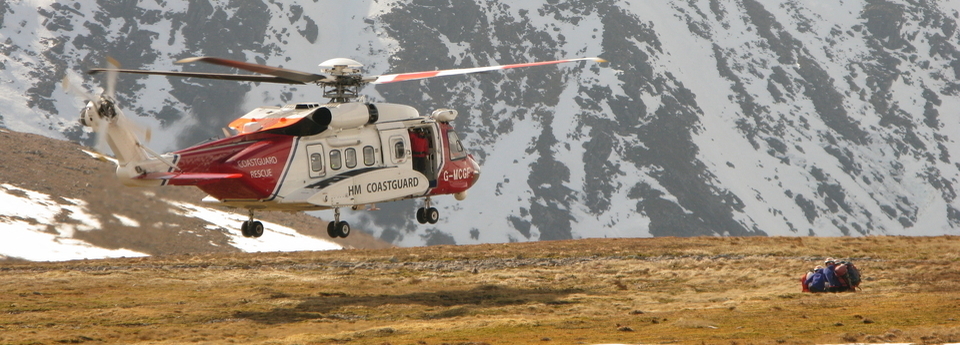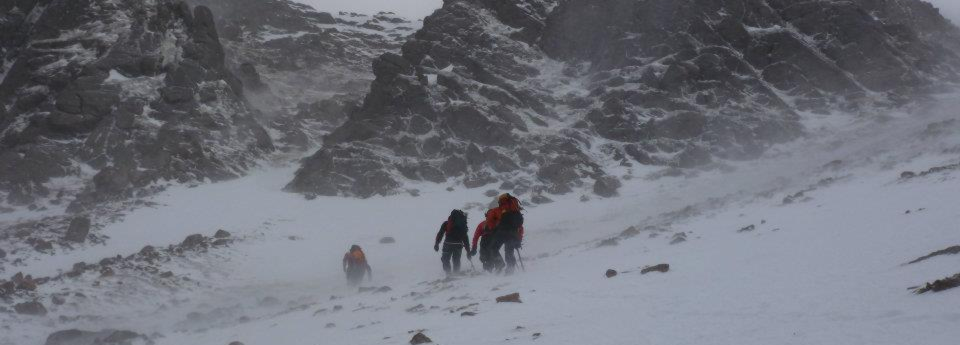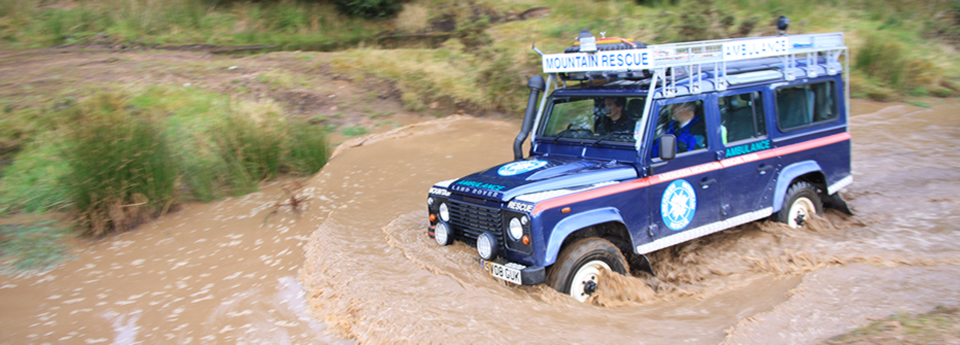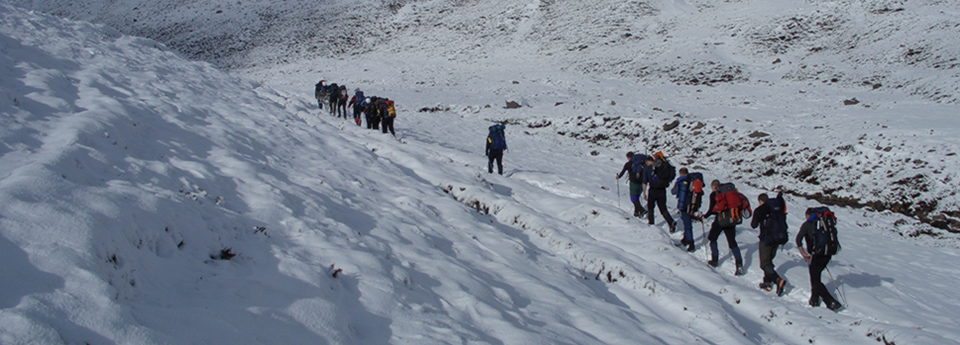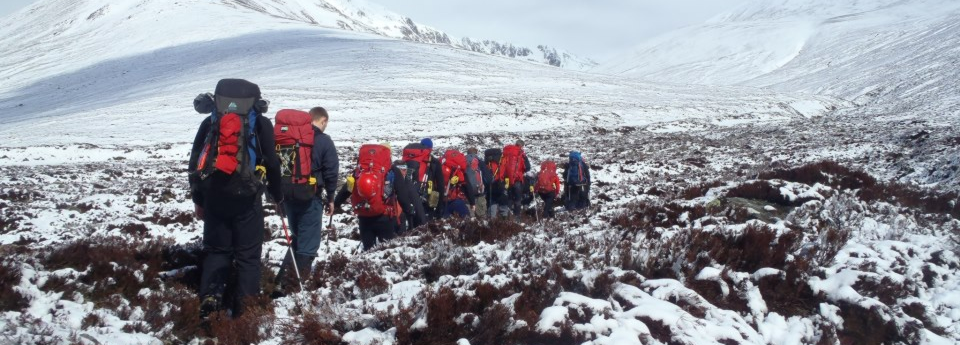Team Leaders' Report 2009
Over the years much has been written about accidents in the Scottish mountains; many have sought to provide a context and an explanation for the regular and frequently tragic incidents that are reported throughout the year in our national newspapers and media. Having said this, up until remarkably recently there has been very little in the way of a systematic attempt to provide meaningful and informed analysis of mountain accidents in Scotland, and apart from some largely anecdotal evidence it has been difficult to identify trends and outcomes. Perhaps not surprisingly the subject of how many incidents and what are the main risk factors are frequently questions asked by hill walking groups and clubs when we speak to them about the work of the Team and issues related to mountain safety.
Fortunately within the ranks of the Mountain Rescue Committee of Scotland there is an individual who has tried to make sense of the information and to provide an objective overview of the situation. Bob Sharp has been an active member of a rescue team for many years and his collation and analysis of incidents has provided some new and interesting insights into the nature of accidents on the hills of Scotland, and has also provided some valuable pointers to future trends. Throughout my report for this year I have included some bits of information from Bob’s work, which hopefully readers will not only find informative, but will also provide an interesting context to the work undertaken by mountain rescue teams in Scotland. I have also highlighted at the end of my report some of the key findings which Bob has deduced from his research and I am indebted to Bob for his permission to reprint this information.
2009 has once again been a fairly busy year for Aberdeen Mountain Rescue Team – a wide variety of incidents on both the high mountains of the Cairngorms and the lower hills of Deeside and Donside have kept us quite busy through the year. January and February saw the Team involved in several searches in central Cairngorms for missing walkers. One of these incidents resulted in a protracted search of much of the area to the west of the Larig Ghru, and involved at one point six rescue teams. Unfortunately, the missing person who had simply gone out for a walk with his dog was subsequently found dead. This particular callout took place in quite testing weather conditions, and once again highlighted the need for Team members to be well trained and equipped in order to undertake the job of mountain rescue.
One interesting feature of 2009 has been the number of incidents that have taken place in and around the lower hills of Deeside and Donside. Bennachie has featured quite regularly in terms of callouts this year, and incidents have ranged form injured mountain bikers to hillwalkers who have sustained broken ankles and the occasional medical emergency. Although these lower hills do not pose the same challenges as the high plateau of the Cairngorms they do come with their own difficulties. Indeed the number of incidents which have taken place on Bennachie over the last two years have prompted the locating of some dedicated rescue equipment in the area thereby hopefully speeding up the response time in relation to rescues.
Although we are generally fortunate in that most of our callouts come spread throughout the year, we do from time to time find ourselves in the position of having to respond to several incidents at the same time or separated by a few hours. This was the case in July of 2009 when the Team was called out to search for a woman who had gone missing on the Hill of Fare whilst out walking with a family group. She had become separated from her companions and as night fell she had become increasingly disorientated. An extensive search of the wooded slopes of the Hill of Fare eventually located the women, and fortunately due to a reasonably mild night she was none the worse for her experience. Within a few short hours the Team was active again when asked to assist in the evacuation of a runner who had collapsed near the summit of Lochnagar – unfortunately this incident did not have such a positive outcome and the casualty did not survive. These two incidents serve to illustrate the variety of tasks which the Team undertakes in its mountain rescue role, and also highlights the demands which are sometimes placed on individual Team members in fulfilling their part within the organisation.
2009 has also seen several long serving Team members retire from the organisation and I would like to take this opportunity to say a particular thank you to Alan Crichton, Mike Green and Gordon Riley, who throughout their many years in the Team provided support, encouragement and considerable expertise, which I have no doubt helped to enhance and develop our professional approach. These three former Team members had between them over 70 years mountain rescue experience, and although we were sad to see them go we wish them all the best for the future – which I have no doubt will continue to include the climbing of hills. Replacing established Team members when they leave has always been a challenge, and we have recently embarked on a campaign to recruit new Team members in the hope that we can maintain both our numbers and also the expertise and availability that are the corner stones of any rescue organisation. Many teams have found it increasingly difficult to recruit and there is considerable speculation as to why this should be the case – maybe being part of a voluntary organisation that places fairly heavy demands on its members is no longer something that young climbers and hillwalkers aspire to. The reality is of course, as Bob Sharp’s study has shown, that the need for locally based rescue teams has if anything grown, and I think that maintaining a sufficiently large body of Team members will prove to be a significant challenge for all rescue teams in the future.
As always a considerable amount of time was given over during 2009 to training. Maintaining our skills as mountaineers and mountain rescuers is a critical part of what we must do in order to ensure that we are able to provide a professional service. Joint exercises with both the Royal Air Force Search and Rescue Helicopters and with other local rescue teams have been a feature of our training programme this year. The variety of incidents which the Team is asked to attend serves to emphasise the need to maintain a varied and relevant training programme throughout the year.
As always I am very conscious that central to the effective operation of the Team is its members – without their dedication and effort we would simply not have a Team. Behind the scenes of course there are a great many people who support the Team and provide the essential backup that allows us to concentrate our time and energy on the business of mountain rescue. To all of these folk I offer heartfelt thanks and look forward to the challenges that will no doubt come our way in 2010.
Mario Di Maio
Team Leader
